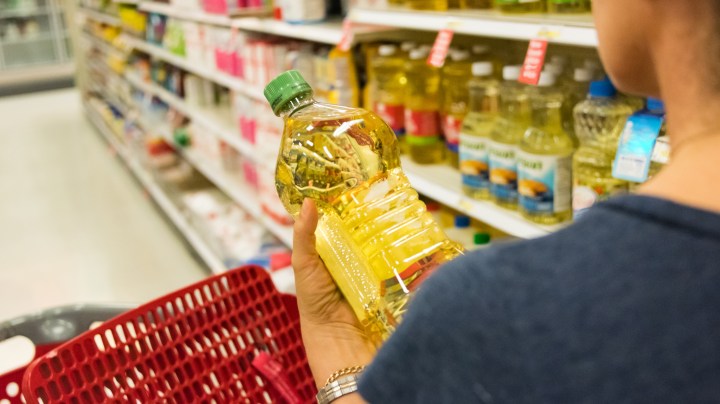
Oil prices surge — vegetable oil, that is
Share Now on:
Oil prices surge — vegetable oil, that is

When we talk about oil prices, we usually don’t mean vegetable oil. But maybe we should pay more attention to them because the prices of vegetable oil commodities — like soy, palm and canola — have surged.
According to the United Nations Food and Agriculture Organization, vegetable oil prices climbed 4.2% during the month of January, reaching an all-time high.
These oils are used in a variety of goods, from cooking oils and food to cosmetics and biofuels. As commodity costs go up, the prices of household goods, menu items and business supplies typically follow suit.
The price rise is largely due to global weather events that have taken a toll on supplies of two key oil commodities: soybeans and palm oil, according to Joe Glauber, senior research fellow at the International Food Policy Research Institute.
“The big issue for soybeans has been drought. Over the last six months, there’s been drought in Argentina and Brazil, and that’s sent prices really high,” he explained.
Glauber said Brazil accounts for about half of global soybean exports, while Indonesia and Malaysia produce much of the world’s palm oil.
“Malaysia got hit by a really bad typhoon and had a lot of flooding. This had a big impact on their palm oil production this year,” he said. “Palm oil prices have gone through the roof.”
While weather has damaged supply, demand stemming from the cooking oil market has not cooled off. But vegetable oils are used in a wide assortment of other products, too.
“With soybeans, you might think of tofu or other foods. But that’s a really small part of the market. A big part is animal feed,” Glauber said. “Some vegetable oil goes to things other than food use, primarily industrial use. They make biodiesel out of it.”
Growing demand for nonfood purposes drives oil prices up further. According to Glauber, vegetable oil commodity prices are roughly 30% higher today than they were a year ago.
High commodity prices push retail prices up too, but not necessarily as much. “Salad dressing, for example, is up about 8% year over year. So we see a 30% jump at the commodity level and a lower increase at the retail level,” Glauber said.
You’ve probably noticed higher prices in the aisles of grocery stores or on the menu of your favorite restaurant.
Russel Smith and his brother own Baby E’s BBQ, a fast-casual barbecue restaurant in Houghton, Michigan. They use soy-based vegetable oil in their deep fryers, and Smith said the price has climbed dramatically over the past year or two.
“Our oil prices have more than doubled. We went from paying a little less than $20 for a tote to now, where the most recent one was about $44 apiece,” he said.
The rising cost of cooking oil, as well as other ingredients and supplies, is a significant challenge for the business. Baby E’s has raised menu prices, but Smith is hesitant to raise them further.
“It’s a financial burden that, for the most part, we just have to suck up. We can’t pass everything on to the customers without frustration and potentially them leaving.”
The good news is that commodity forecasters are cautiously optimistic that if weather conditions improve, oil prices will gradually come down.
“People are going to be planting a lot of crops this year. Given normal weather, crops should rebound and those prices will fall,” Glauber said.
Still, oil prices probably won’t fall right away, and the changing costs of other elements of the food system — like labor, energy and transportation — make it difficult to predict the future of food prices.
There’s a lot happening in the world. Through it all, Marketplace is here for you.
You rely on Marketplace to break down the world’s events and tell you how it affects you in a fact-based, approachable way. We rely on your financial support to keep making that possible.
Your donation today powers the independent journalism that you rely on. For just $5/month, you can help sustain Marketplace so we can keep reporting on the things that matter to you.


















